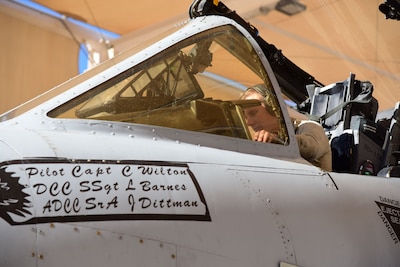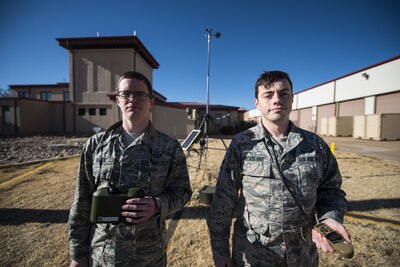By Air Force Senior Airman Betty R. Chevalier 355th Fighter
Wing
The Air Force’s Heritage Flight is scheduled to visit
Minnesota to represent the Air Force Feb. 4 at the Super Bowl.
For the first time in the unit’s history, the Heritage
Flight will perform an aircraft flyover -- consisting of two A-10C Thunderbolt
IIs, an F-16 Fighting Falcon and a P-51 Mustang -- over U.S. Bank Stadium in Minneapolis
during the Super Bowl’s opening ceremonies.
The U.S. Air Force Heritage Flight Program presents the
evolution of Air Force air power by flying state-of-the-art fighter aircraft in
close formation with vintage aircraft to display Air Force history to support
Air Force recruiting and retention efforts.
Representing the Air Force
“We are fortunate enough to be able to represent the
professionalism and dedication of our Air Force to millions of spectators
across the globe,” said Air Force Maj. John Waters, F-16 Viper Demonstration
Team commander. “I think everyone is excited to see flyovers. To be flying in
formation with a P-51 and two A-10s across the biggest game in football is hard
to top, in my opinion.”
The F-16 Viper Demo Team, from Shaw Air Force Base, South
Carolina; the A-10C Thunderbolt II Demonstration Team, based here; and a P-51
Mustang from the Air Force Heritage Flight Foundation in California, will
represent the Air Force in the Heritage Flight.
For one of the A-10 pilots, this flyover will be his last
official Heritage Flight.
“It is bittersweet knowing that this will likely be the last
time I am able to fly in formation with such historic airframes,” said Air
Force Maj. Chad Rudolph. “However, knowing that this will be my last time to
fly with such skilled aviators in the Air Force Heritage Flight Foundation will
make this flight more sentimental.”
In addition to the event being the last flight for one team
member, this will be the first event for the F-16 Viper Demo Team
superintendent, who is returning to his home state for the event.
Air Force Master Sgt. Chris Schneider was born near
Minneapolis and grew up two hours northwest of the city in Alexandria, where he
lived until age 6. Although he moved, he visited almost every summer,
eventually relocating back to Alexandria at 14. He graduated from Jefferson
High School and then joined the Air Force in 1998.
Part of the Team
“It is an amazing feeling any time I get to go back to my
home state, but I am absolutely ecstatic and humbled to be a part of this team
that will going up to Minneapolis for this very unique flyover formation,”
Schneider said.
As part of the Heritage Flight program, the Air Force
Heritage Flight Foundation honors the sacrifices of those who have served or
are now serving in the Air Force through participation in flight displays.
“This flyover flight is more than just a simple high-speed
pass over a professional sports stadium,” Rudolph said. “This flight is a
representation of the Air Force's dedication to preserving the past of those
that have executed the same missions long before us. For the A-10, this flight
is especially symbolic of the men and women who have stood by the world's only
dedicated close air support airframe in order to continue its legacy.”








